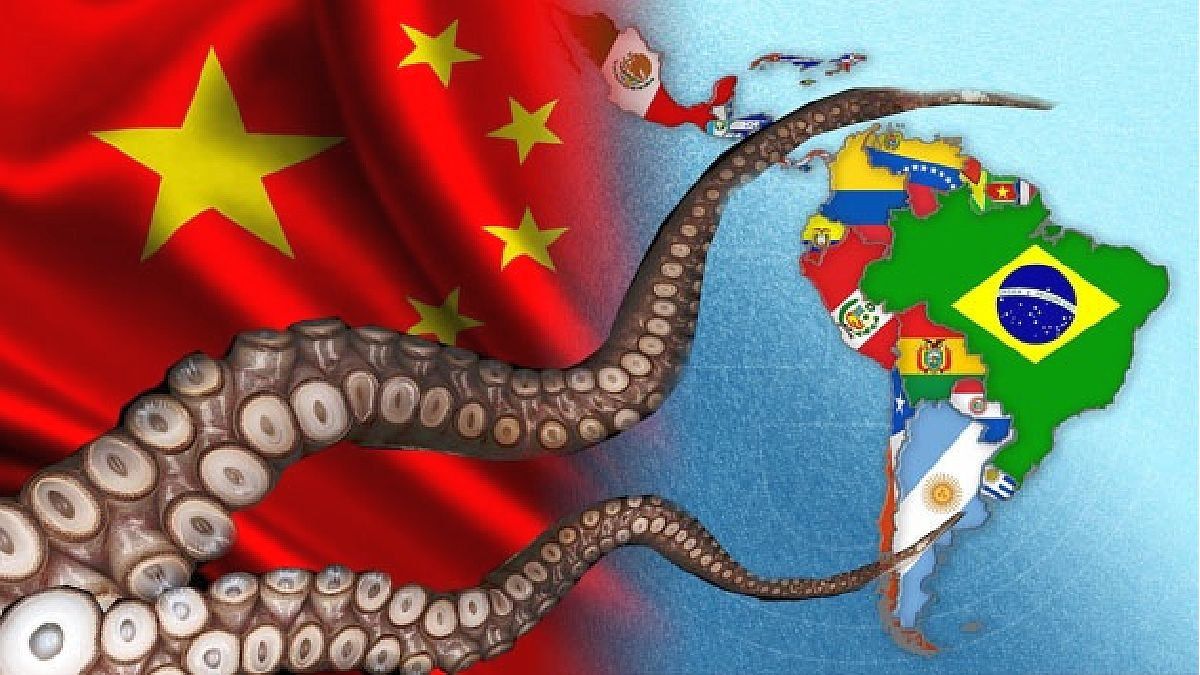China is the world’s largest exporter achieving $2.5 trillion selling their products to the world. This number seems small if you look at it in perspective with the investments it has made in different parts of the world. With an increase in gross capital formation that far exceeds that of the United States.
China gross capital formation graph.jpg
Gross capital formation: 2000-2020. Source: World Bank.
China not only exports goods, it also exports its model.
An example of this is the famous Karakorum highway, which crosses China and Pakistan, part of a 57,000 million dollar investment plan so that the Asian giant from the West of its country has quick access to the Indian Ocean and thus be able to get the best price to Africa, Middle East and Europe.
Mercosur is a different theater of operations but no less cheap than Asia. China has grown its presence in the southern cone through military, infrastructure and oil investments. We can also add the cases of Potassium extraction in Mendoza, hydroelectric dams in Santa Cruz, lithium in Jujuy and Salta within a variable of dozens of multi-million dollar projects that are primarily for the extraction of natural resources from our territory and the possibility of investing in infrastructure. so that the extraction capacity is optimized not only in time but also in money.
Investments in Mercosur are not only in Argentina, Brazil is at the top with 66,000 million dollars. According to the CEBC (China-Brazil Business Council). Tulio Karelius states: “Between 2007 and 2020, Chinese companies made large investments in the electricity sector, which attracted 48% of the total amount, followed by oil extraction (28%), and mining (7%).
In smaller countries like Uruguay, Paraguay and Bolivia. The latter is in the process of joining Mercosur, relations with China are accentuated by increasing exports to the Asian country. Bolivia has received $2.3 billion through the companies TBEA and Baochend with the purpose of industrializing the extraction of lithium in the South American country. Let us remember that China is a net importer of lithium. For its part, Uruguay exports more than $3.2 billion in beef, being its main commercial partner, China.
ALBERTO FERNANDEZ AND XI JINPING.jpeg

Presidency of the Nation
China’s position comes to influence Africa with an agreement that it reached with the nations of this continent with the creation of the FOCAC (Forum of African-China Cooperation). China is the main creditor of the African countries and the largest trading partner in a continent that has a market of 1.2 billion people. The strategy of the new silk road is not only to make exports to Africa, Europe and Central Asia viable, but also to improve the infrastructure in southern Africa to establish a maritime corridor between Africa, South America and China through the Indian Ocean and the South Atlantic. Where a market of 420 million inhabitants is added, such as the continent of South America. The possibility of improving the quality of infrastructure will allow the creation of a maritime route between the South Atlantic and the Indian Ocean.
In China, industrialization is losing momentum due to the lack of energy in supplies of oil, gas and other raw materials such as lithium that are used for the process of industrial transformation. For that reason, heThe ability to improve logistical conditions is a positive factor for extraction and subsequent manufacturing.
The world’s largest renewable energy material production has allowed China to position itself as the world’s largest supplier of artifacts. But this Silk Road is not only for exporting but also for importing food, minerals from Africa, to Chile and Australia, ensuring access to the necessary minerals for solar panels, windmills, electric vehicles and other devices. Where in these markets it takes more than 50% of the international market share.
The new Silk Road is not only intended to improve the Chinese export role, but also to make imports cheaper by improving logistics in the search for inputs for Chinese industrial growth. Are we facing a new dependency relationship between the markets that sell inputs and repurchase finished goods?
Source: Ambito




